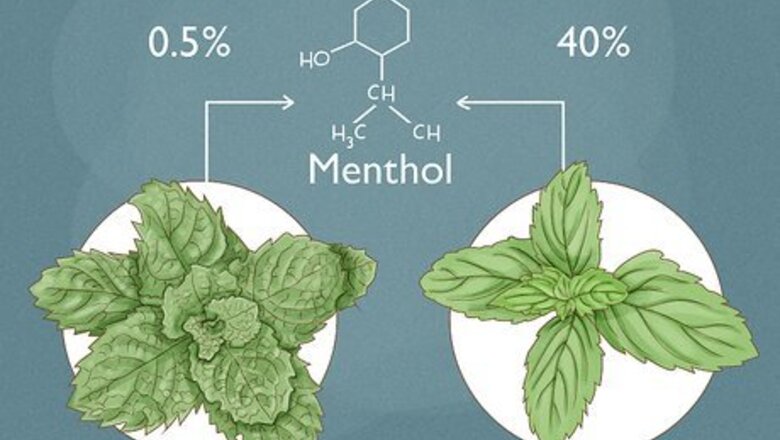
views
- Due to its high menthol content, peppermint has a strong, spicy taste that complements desserts.
- Spearmint has a subtle, sweet flavor that works well in savory dishes and cocktails.
- Peppermint provides a wider range of medicinal purposes than spearmint; it treats headaches, improves digestion, and relieves body pains.
Differences Between Spearmint & Peppermint
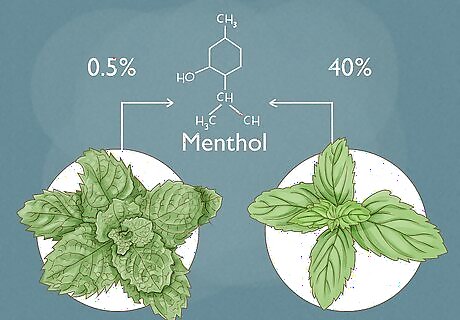
Menthol Content Menthol is the chemical in mint that gives you a cooling mouth sensation. Both peppermint and spearmint contain menthol, but peppermint has significantly higher menthol content (40%) than spearmint (0.05%). Peppermint contains more menthol because it’s a hybrid of spearmint and watermint–it belongs to both the Mentha genus and Piperita species. Spearmint occurs naturally and belongs to the Spicata species.
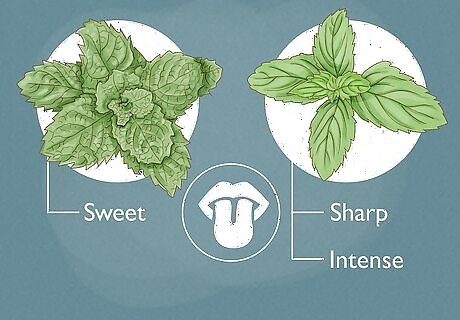
Taste Due to its high menthol content, peppermint has a sharp, intense flavor that complements desserts. Spearmint has a more subtle, sweet taste, often used in savory dishes. Peppermint enhances chocolate, coffee, and citrus flavors. Spearmint pairs surprisingly well with lamb, pork, celery leaves, and mustard. Most drink recipes call for spearmint, but you can make a mojito or mint julep with peppermint for a spicy kick. Some people swear you need spearmint to make tzatziki authentically.
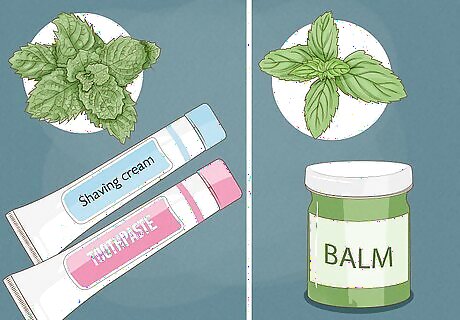
Use Spearmint is known to reduce nausea and improve digestion, but it’s generally limited to use in the kitchen. Peppermint, however, serves a wide range of medicinal purposes, and studies show it decreases anxiety and relieves stress. Spearmint is a common ingredient in shaving cream and toothpaste. Peppermint is often found in over-the-counter balms and rubs to relieve body aches. Apply peppermint oil to your temples and forehead to relieve headaches. Make peppermint tea to ease bloating and indigestion.

Appearance Although both mint varieties look similar, peppermint leaves are smooth and round, while spearmint leaves are more pointed. Spearmint leaves also have deeper set veins, and the leaf's edge is slightly more jagged. Peppermint has a distinct purple stem, so peppermint leaves typically have a purple hue. It’s challenging to differentiate spearmint and peppermint solely from appearance, so make sure to taste the leaves to tell the difference.
Do peppermint and spearmint have the same benefits?
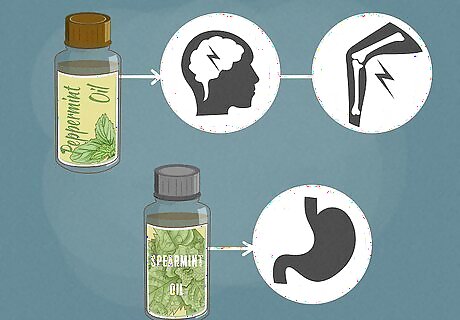
Peppermint provides more medicinal benefits than spearmint. Both spearmint and peppermint provide a host of benefits, but peppermint is more widely used in the health community. Peppermint oil treats sinus infections, sore throats, headaches, and joint pain, while spearmint is usually limited to digestive and inflammation issues. Spearmint is better at treating acne because it’s the most anti-inflammatory mint variety.
Can you substitute peppermint for spearmint?
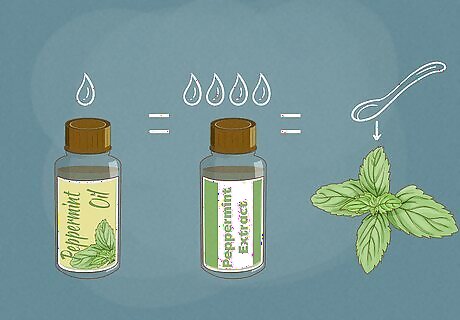
Peppermint and spearmint are similar, but they’re not ideal substitutes. Compared to spearmint, peppermint is more intense in flavor and aroma, so it’s more likely to overpower other ingredients in a recipe. If you need to replace spearmint in a savory dish, use basil or parsley instead. If you need an alternative for peppermint, add 1 drop of peppermint oil or four drops of peppermint extract for every 1 tablespoon (14.8 g) of chopped mint in a recipe.




















Comments
0 comment